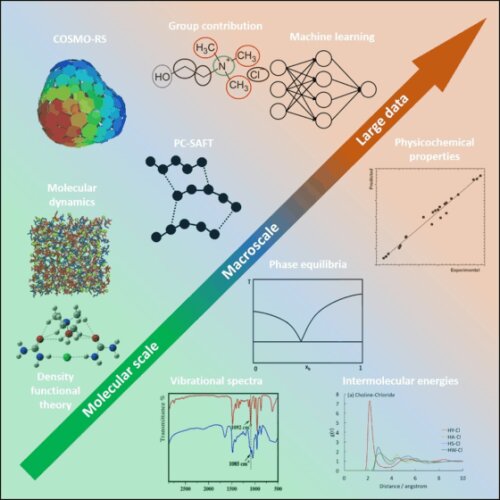Designer solvents NADES
Solvents are a staple to many (bio)chemical processes, allowing to perform extractions, adsorptions, homogeneous reactions, and many more. Moreover, very often reagents themselves in crude reaction mixtures can be considered as internal solvents. Therefore, a strong working knowledge on the behavior and influences of solvents is primordial in designing sustainable chemical processes. Many solvents are associated with a diversity of problems though, they may be toxic, volatile (giving rise to a large share of VOC emissions), and their recovery might impose a strong energy demand to the overall process. Most organic solvents to date are fossil-based. In case their recovery is economically not feasible, the solvents are sometimes burned after use, giving rise to fossil CO2.
Roughly a decade ago, research on Natural Deep Eutectic Solvents (NADES) started to lift off. Inspired by ionic liquids, researchers discovered that mixtures of some primary metabolites (sugars, glycerol, amino acid derivates) have very deep melting point suppressions (leading to a eutectic). The final melting point of these mixtures is often in the vicinity of room temperature or lower, rendering them useful as solvents. Contrary to ionic liquids, NADES are very simple to obtain and produce, and their constituents are bio-benign.
Nevertheless, although many reports were published thus far, a common strategy to design these “designer” solvents is missing. It is barely understood how the relatively high viscosity and surface tension of these solvents, as well as their specific hydrogen bonding capacity, influences catalytic reactions. iPRACS is studying how the properties of NADES can be predicted based on the formulation of their constituents, using a combination of computational chemistry techniques (DFT and MD, in collaboration with PLASMANT), group contribution methods and machine learning. Additionally, we are elucidating the exact influence of NADES on enzymes in biocatalytic reactions (in collaboration with BioWaVE). We are using a variety of analysis techniques to track reactions and the enzymatic efficiency, including HPLC-DAD/ELSD and FTIR. Upon unravelling the influence of NADES on biocatalytic reactions, also their effect on homogeneous chemical catalysis can be understood and predicted. Furthermore, we are using our knowledge in a collaborative study (with KdG and UHasselt) on the effect of NADES on processing of cellulose into microfibrils.
